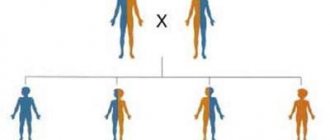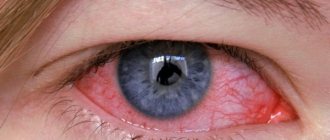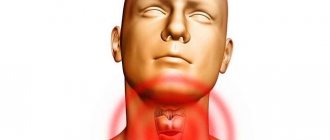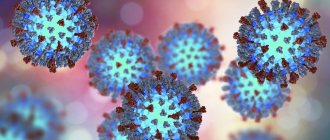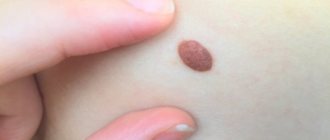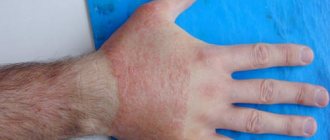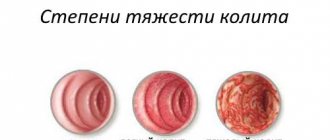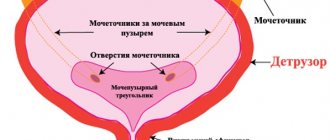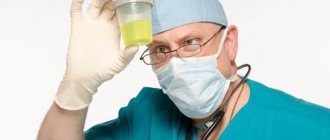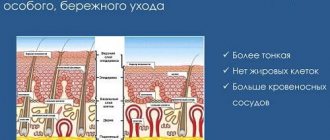December 29, 2020 | No comments | Gastrointestinal tract of a child
Abdominal pain is a common occurrence in children of all ages. Parents need to be vigilant: at the first complaint of a child about discomfort in the tummy, you should consult a doctor, especially if the baby often suffers from viral infections, tonsillitis, or has chronic diseases (pyelonephritis, cholecystitis, gastroduodenitis, tonsillitis, otitis media, etc.). After all, the baby’s immunity may at some point fail to cope with the microbial load, and then serious diseases develop, one of which is mesadenitis.
- 2 Causes of occurrence in children
- 3 Types
- 4 Manifestations of mesadenitis
- 5 Diagnostics
5.1 Differential diagnosis
- 7.1 Drug therapy
7.2.1 Folk remedies for the treatment of disease (gallery)
- 7.3.1 Products recommended for consumption (gallery)
What is mesadenitis?
One of the lymph nodes in the abdominal cavity is the mesenteric. What is mesadenitis? This is an inflammation of the mesenteric lymph node of the abdominal cavity. Other names are mesenteritis, mesenteric lymphadenitis.
According to forms it is divided into:
- Acute – cramping and vivid symptoms;
- Chronic (recurrent) - only pain that does not go away for a long time is noted.
By type of pathogen they are divided into:
- Specific is divided into types:
- Tuberculosis - provoked by Mycobacterium tuberculosis - Micobacterium tuberculosis;
- Pseudotuberculous;
- Yersinia - provoked by Mycobacterium Yersinia - Yersinia.
- Nonspecific - provoked by pathogenic microbacteria that constantly live in the body, but are activated when immunity decreases or due to other “trigger” factors. Divided by:
- Simple;
- Purulent.
By route of infection:
- Enteral - penetration of a microorganism from another part of the digestive system;
- Lymphogenic - the microorganism penetrates through the blood or lymph from another affected organ, for example, appendicitis or the respiratory tract.
go to top
Mesadenitis: diet and complex treatment
Children often suffer from abdominal pain. The cause may be mesadenitis. Its development is associated with the lymphatic system of the child’s body.
One of the functions of the lymphatic system is to filter harmful substances and microorganisms that enter the human body. Lymph nodes are rightfully considered the main filters. Their groups are located next to organs through which infectious agents can enter the body: lungs, ENT organs, intestines, pelvic organs.
The intestine, located, is surrounded by the mesentery - folds of the abdominal membrane that attach organs to the posterior wall of the abdomen. The mesentery contains vessels responsible for feeding the abdominal organs and draining fluid from them with metabolic products, and also contains lymph nodes numbering more than 500. In them, which collect lymph from nearby organs, inflammation can develop.
Omelette can be prepared with chicken or quail eggs
One of the most effective methods of treating mesadenitis in preschool/school-age children is a medicinal course of antibiotics aimed at suppressing the focus of infectious inflammation in the intestinal lymph nodes. As a result, there is a death not only of harmful bacteria, but also of beneficial microflora that populate the intestines and ensure the productive process of digestion and absorption of nutrients supplied through the consumption of food.
Diagnostic laparoscopy. Mesodenitis. Excisional biopsy.
Torsion of fatty appendage of the colon (laparoscopy)
Therefore, the dietary nutrition system, prescribed during a course of drug and physiotherapeutic treatment and at the stage of adaptation of the body after an illness, consists of the following drinks and dishes:
- The product is kefir, characterized by an average percentage of fat in its molecular composition, as well as the presence of beneficial bifidobacteria.
- Porridge made from oatmeal, buckwheat or barley. It is recommended to rub all porridges through a sieve to minimize the load on the gastrointestinal tract and digestive system of a child suffering from inflammation of the abdominal lymph nodes.
- Omelette made from chicken or quail eggs without adding milk. For mesadenitis, characterized by the presence of diarrhea and unstable stool in patients, it is recommended to consume three hard-boiled chicken eggs for breakfast.
- Stewed vegetables with minimal addition of brown or jasmine rice. This stimulates the intestines, strengthens the stomach, and minimizes the risk of further development of diarrhea or vomiting.
- Meat or fish broth. As a rule, broths are served in a mug and supplemented with dietary crackers without adding flavor enhancers or hot seasonings.
- Bakery products made from peeled flour. Nutritionists who prescribe a therapeutic diet during the period of mesadenitis and exacerbation of inflammatory processes in the abdominal lymph nodes recommend including second-fresh bakery products in your food.
As for drinks, during the period of compliance with the therapeutic and restorative dietary methodology, the consumption of liquid jelly and warm teas with minimal addition of sugar powder is allowed. The main goal of the diet is to restore beneficial intestinal microflora, populate the esophagus with beneficial bacteria and microorganisms, as well as activate the function of independent cellular regeneration in the body of a child suffering from inflammation of the lymph nodes in the intestine in the early or severe stages.
When treating the above-described illness, as well as other gastrointestinal diseases, a diet is prescribed for mesadenitis in children (table No. 5).
The main nutritional requirement is to eat food frequently (every 3-4 hours) in small portions.
It is forbidden to eat before bedtime, but drinking is allowed without restrictions.
Food should be cooked in the oven or boiled.
For this disease, the following products are prohibited:
- fatty meat and fish products, lard, all fried foods;
- fatty meat broths;
- tea, coffee, chocolate;
- hot, salty, smoked, spicy food;
- semi-finished products, eggs, canned food, mushrooms;
- ice cream, buns, cakes;
- radishes, sorrel.
Causes of inflammation of the mesenteric lymph node
Inflammation of the mesenteric lymph node is provoked only by infectious causes:
- Enteroviruses are often causative agents of various gastrointestinal diseases, accompanied by loose stools, increased gas formation and abdominal pain.
- The Epstein-Barr virus is a provocateur of various infectious and oncological diseases, malignant, rapidly progressive and rapidly growing tumors: infectious mononucleosis, Burnitt's lymphoma, nasopharyngeal carcinoma.
- Yersinia is a provocateur of mainly various diseases of the gastrointestinal tract and nearby lymph nodes.
- Streptococci and staphylococci are bacteria that normally live inside the body and are activated when immunity decreases.
- Campylobacter is a provocateur of symptoms such as diarrhea.
- Salmonella.
- Mycobacterium tuberculosis is an infection that affects the digestive and respiratory systems, as well as adjacent lymph nodes.
go to top
Symptoms of pathology
Symptoms of mesadenitis in adults and children may differ depending on the form of the pathology. Acute deviation is characterized by:
- painful sensation;
- digestive disorder syndrome;
- an increase in body temperature;
- changes in blood pressure;
- increased heart rate.
Acute inflammation of the mesentery is manifested by a painful sensation in the upper abdomen or in the middle. Often patients cannot accurately name the location of the sign. Its intensity increases when changing position, coughing or sneezing.
The intensity of the symptom does not decrease. Only occasionally the pain may disappear. Lack of treatment leads to suppuration. Serious complications arise. Mesenteric lymphadenitis manifests itself as a digestive disorder syndrome. The patient complains of a gag reflex, dry mouth, decreased appetite and diarrhea. The sick person's body temperature increases to 40 degrees. There are jumps in blood pressure.
With mesadenitis, pressure may increase
Inflamed lymph nodes in the abdomen in women and men in the chronic form of the pathology manifest themselves with mild symptoms. The painful sensation is short-term with uncertain localization. Signs intensify with physical activity.
Acute mesadenitis causes more discomfort to the patient than the chronic form. The sick person feels unwell, and performance rapidly decreases.
Symptoms and signs
Symptoms of mesenteric lymph node mesadenitis are divided according to the forms of the disease. In acute mesadenitis, the following symptoms appear:
- The first symptoms, which arise brightly and acutely, resemble acute appendicitis: sharp pain in the solar plexus, fever, vomiting and nausea.
- Pain throughout the abdomen. The patient cannot say exactly where it hurts - “everything hurts.” The pain is dull, prolonged, constant, moderate, only intensifying with the development of inflammation. Sometimes the pain may disappear. However, with suppuration of the lymph nodes, the pain increases. Any movement of the body intensifies the pain.
- A syndrome of digestive (dyspeptic) disorders develops, that is, inherent in all types of gastrointestinal diseases (for example, diverticulitis, gastritis, colitis, etc.):
- occasional nausea
- loss of appetite,
- one-time vomiting
- dry mouth,
- thirst,
- diarrhea (loose stools).
- Fever up to 39ºС.
- Blood pressure rises and falls.
- Frequent breathing and heartbeat.
In chronic mesadenitis, the symptoms are mild. Pain is observed throughout the abdomen (the patient cannot understand the location of the pain), intensifying with movements.
go to top
Classification of the disease
Acute pathology of the disease is accompanied by sudden development and vivid symptoms
With mesadenitis, both individual lymph nodes and the whole group can be affected.
There are two forms of the disease:
- Acute mesadenitis. It develops suddenly and has a bright manifestation.
- Chronic mesadenitis. For a long time it may not appear or have a blurred clinical picture.
Based on the type of pathogen, the following types of disease are distinguished:
- Specific. The formation of this disease occurs under the influence of Yersinia bacteria or Mycobacterium tuberculosis (Koch bacillus).
- Non-specific. This disease occurs due to the proliferation in the body of bacteria or viruses that enter the lymph node from the main source of infection.
In turn, nonspecific mesadenitis can have two forms:
- Simple (catarrhal). It is characterized by the development of an inflammatory process without direct tissue suppuration.
- Purulent. It usually occurs against the background of an insufficiently treated simple form and consists of suppuration of the node with subsequent tissue necrosis. If treatment is not done in a timely manner, the lymph node tissue is affected so deeply that it requires removal.
Diagnostics
Diagnosis of mesadenitis is carried out comprehensively, examining not only the organs of the digestive system, but also other systems from which the infection could penetrate. It all starts with collecting complaints, analyzing the patient’s lifestyle, as well as family history for genetic predisposition to certain diseases.
- A general examination is carried out by palpation, palpation, examination of the oral cavity, measuring pressure and temperature, heartbeat and respiration.
- Blood test for elevated levels of leukocytes and the presence of viruses.
- Stool analysis and coprogram.
- Analysis of urine.
- Mantoux test and Diaskintest (intradermal test for tuberculosis).
- Blood culture for sterility.
- PCR.
- Ultrasound of the abdominal cavity.
- Parasitic diagnosis.
- Colonoscopy.
- X-ray of the abdominal cavity.
- Esophagogastroduodenoscopy (EGDS).
- CT and MRI of the peritoneum.
- Diagnostic laparoscopy.
go to top
Diagnostic methods
If a pathology is suspected, the doctor will first find out about recently suffered pathologies. Enlarged lymph nodes in the abdominal cavity in adults and children are often present after influenza and sore throat. Diagnostics must be comprehensive.
First of all, the doctor resorts to an initial examination. The doctor measures body temperature and blood pressure. The abdomen is palpated to determine the location of the pain syndrome. The condition of the skin and mucous membranes is studied. Diagnostics allows you to find out the causes of mesadenitis.
To clarify the diagnosis, the patient donates blood
The patient is given a referral for laboratory tests:
- general and biochemical blood test;
- tuberculin test;
- fecal analysis;
- coprogram;
- PCR.
Laboratory testing allows you to determine the number of leukocytes, detect pathogenic microorganisms and find hidden blood in the stool. The patient is also given a referral to:
- ultrasonography;
- laparoscopy;
- CT.
Thanks to instrumental diagnostic methods, the condition of internal organs is studied and the size of the lymph nodes is determined. It is necessary to exclude possible appendicitis.
Treatment
How is mesadenitis treated? Treatment is comprehensive, including medications, diet and physical therapy.
The diet consists of the following:
- Eat small meals.
- You can eat compote, bread, low-fat cottage cheese, lean meat, weak tea, crumbly cereals, beans, vegetable soups, non-acidic fruits, salad.
- It is prohibited to use fresh baked goods, fatty meat and fish, ice cream, alcohol, sorrel, mustard, fried meat, lard, spinach, pepper, black coffee, and semi-finished products in the menu.
Physiotherapy takes place in the following procedures:
- Sedentary mode.
- No stress factors.
- Therapeutic techniques.
- Massage.
- Dry UHF.
- Breathing and therapeutic exercises.
Medicines prescribed:
- Painkillers and antispasmodics.
- Antibiotics;
- Antituberculosis drugs for tuberculous mesadenitis.
- Perinephric blocks.
- Detoxification therapy.
If the disease develops against the background of another infectious disease, then additional treatment for the root cause is carried out.
Mesadenitis cannot be treated at home. Without qualified medical care, the disease cannot be eliminated. You can only miss the time when it could quickly heal.
go to top
Accuracy of Murphy's technique
The achievements of modern medicine make it possible to determine acute cholecystitis using hardware and instrumental methods. The most revealing can be considered MRI and ultrasound. Murphy's symptom serves as a reason for prescribing this diagnosis.
Despite hardware methods, Murphy's symptom remains relevant, since treatment often needs to be started urgently; there is simply no time or opportunity to take the patient for a more accurate diagnosis. For example, the patient is in a remote village, in a hunters' or shepherds' camp, where it is impossible to deliver medical equipment.
Modern methods make it possible to identify the disease (acute cholecystitis) with an ultrasound Murphy sign. The accuracy of this method exceeds 90%. For diagnosis, a special probe is used to determine the location of the gallbladder. Next, the patient should take a deep breath, and the doctor should sharply press the probe on the bubble.
We will start with the symptoms of acute and chronic appendicitis, which is dangerous by the development of infectious-toxic shock and peritonitis. With appendicitis, abdominal pain appears:
- At first the pain is aching, located in the center of the abdomen, gradually shifting to the right iliac region. This is the Volkovich-Kocher symptom. It appears at the beginning of the disease.
- Voskresensky's symptom is also recorded - when holding the hand from the right edge of the costal arch with the palm down, the pain intensifies.
- Rovsing's sign is determined by pressure on the left iliac region. In this case, gases move in the descending colon, which provoke increased pain on the right.
- Sitkovsky’s method - when the patient turns on his left side, the pain intensifies in the area of the ileocecal angle, that is, in the right iliac region.
- The Bartholomew-Michelson maneuver is similar to the previous one, however, here the area of the ileocecal angle is palpated with the patient positioned on the left side, as a result of which the pain intensifies.
- S. Dumbadze – there is pain in the umbilical region of the abdomen.
- Psoas symptom, or Obraztsov’s symptom, when when raising the right leg, abdominal pain intensifies upon palpation.
- Volkovich's syndrome is a symptom of chronic appendicitis - hypotrophy and even atrophy of the muscles of the anterior abdominal wall appear in the right iliac region, and when palpating the cecum and retracting it outward, the pain increases.
Cholecystitis is an inflammatory disease of the gallbladder, which can cause great discomfort to the patient. Let's consider a number of symptoms that will help identify this pathology:
- Sm Murphy. The initial position of the patient is on his back. The left hand is on the stomach just below the right costal arch. The thumb is located in the projection of the gallbladder. When you take a deep breath, the stomach does not rise to the highest point, as its movement is interrupted by a sharp pain under the thumb of the left hand.
- Sm Ortner-Grekov. The patient's position is also on his back. When you tap on the right costal arch with the edge of your palm, pain will appear.
- Sm Georgievsky-Mussi, or phrenicus syndrome. If you press your finger above the collarbone between the legs of the sternocleidomastoid muscle, pain will be detected.
- Sm Kera. When inhaling during palpation of the abdomen, pain appears in the right hypochondrium.
- Sm Boas. Hyperesthesia in the lumbar region of the back.
- Sm Zakharyin. Pain appears in the projection of the gallbladder when pressing and tapping. These are symptoms of acute cholecystitis.
Pancreatitis is inflammation of the pancreas. Pancreatitis is often associated with malnutrition, alcohol abuse, and hereditary pathology. Its symptoms upon objective examination are as follows:
- Sm Mayo-Robson. Pain is detected in the region of the costovertebral angle on the left.
- Sm Voskresensky - the pulsation of the aorta below the celiac trunk disappears.
- S-Kacha is a sign of chronic pancreatitis - hyperesthesia in the area of innervation of the Th8 nerve, which corresponds to the 8th intercostal space on the left and right. This symptom is related to the girdling pain during an attack of pancreatic pain.
- S. Krymova talks about perforation of the ulcer - pain when palpating the navel with a fingertip.
- Boas's point - a pain point is determined in the back at the level of Th12 (12 pair of thoracic nerves, 12 segment of the thoracic spine) on the left.
- The “splashing noise” occurs when there is stenosis of the pyloric part of the stomach, that is, the part that is connected to the duodenum.
These are the most important symptoms of gastric and duodenal ulcers.
Quite specific symptoms will be determined in diseases of the urinary system:
- S-Pasternatsky - when tapping the lumbar region on the right or left, pain is determined on the affected side, and also after this manipulation, blood cells, in particular, red blood cells, appear in the urine test.
- S-th effleurage - in the presence of kidney pathology, pain will be detected at the site of effleurage.
- Guyon's method - palpation of the kidney reveals its pathological mobility. This symptom in most cases indicates a tumor.
Vascular lesions are quite a big problem and many people cannot decide to go to the doctor. We have collected several symptoms for some angiopathy that will help you decide on further examination and treatment.
- Trendelenburg's syndrome occurs with varicose veins, when the venous valves function poorly or do not function at all. The patient is asked to lie down and raise the affected leg up until the vessels are empty. Then the saphenous vein is clamped with a finger and the patient is asked to quickly take a vertical position. If pathology occurs, when the fingers are removed, the venous vessels immediately fill.
- Moshkovich's test - when removing the elastic bandage, the rate of increase in hyperemia and its intensity is much less on the sore leg than on the healthy leg. This test reveals obliterating angiopathy.
- S-Hackenbruch-Sicard - when coughing, a shock is detected during palpation of the femoral vein. This is a positive symptom that informs about the presence of valvular insufficiency.
- Hm, or Kazachescu's test. Using this test, thrombolytic pathology of the arteries is detected. A line is drawn along the entire leg with a blunt object. Where blood circulation is impaired, the redness of the line breaks off.
- Sm Delbe-Perthes. An elastic bandage is applied to the upper third of the thigh, which prevents the outflow of blood through the veins. When in this state for several minutes, usually from 3 to 5, if the filling of the veins with blood decreases, it means that the deep vessels are passable; if filling occurs, we can talk about deep venous pathology.
In fact, to determine venous and arterial insufficiency, there are many methods and symptoms that are less significant, so we will not describe them.
Summer brings us not only joy and fun, but also trauma. How to identify this or that damage? The symptoms below will help: Symptoms when injuries occur
- S-m balloting of the patella. This symptom indicates that there is fluid in the joint (synovitis, arthritis, hemarthrosis).
- Beler's syndrome occurs only with a meniscus injury located in the knee joint. It manifests itself as increased pain in the joint when walking backwards.
- Weinstein's S is determined by habitual dislocation of the shoulder. The patient is asked to abduct both shoulders 90 degrees and bend the arm at the elbow joints at a right angle. In this position, difficulties in outward rotational movements are identified.
- S-M Vereneya is a sign of a fracture of the pelvic bones. Pain appears when the pelvic bones are gently squeezed in the transverse direction (where the iliac crests are located).
- Sm Gorinevskaya, or the “sticky heel” symptom. This is a sign of a fracture of the superior ramus of the pubis. Its manifestations are that the patient cannot lift his leg in an extended position, but must certainly pull it towards the body. If someone else lifts the leg, the patient can easily hold it on his own.
- With the development of peritonitis, that is, inflammation of the peritoneum, pain appears on palpation of the abdomen. When you press on the stomach and suddenly remove your hands, the pain instantly intensifies. This is a symptom of an acute abdomen - the Shchetkin-Blumberg symptom.
- Valya's symptom indicates intestinal obstruction. Its essence lies in the appearance of local accumulation of gases in the intestine or protrusion of the proximal intestine.
That's all the information. We have given you only the most necessary and useful things, so after reading about these symptoms, you may suspect a particular disease. However, there is no need to exaggerate your strength and still, if necessary, you should consult a doctor.
- S-Möbius. Relevant for thyrotoxicosis (excessive thyroid function). If you ask the patient to look closely at an object, he will not be able to carry out this action for a long time and one of the eyes will move outward.
- C-telegraph pole - trembling of the whole body during thyrotoxicosis.
- Graefe's sign is determined by the presence of a strip of sclera between the iris and the upper eyelid. This symptom will always be present with thyrotoxic exophthalmos.
- Sm Valsalva. When the patient coughs, an enlarged thyroid gland in the form of a goiter is visualized.
Complications that often occur with tuberculous mesadenitis
- Suppuration and abscess formation.
- Peritonitis is the spread of purulent contents throughout the abdominal cavity as a result of ruptured lymph nodes.
- Sepsis is the spread of infection throughout the body through the blood.
- Generalized lymphadenitis – damage to all lymph nodes of the body.
You should identify all infectious diseases in time and seek medical help, without waiting for infections to begin to spread, affecting neighboring tissues and organs, as well as the entire body.
Mechanism of action
The occurrence of this symptom is determined by the location of the phrenic nerve. Departing from the cervical plexus, it descends lower along the anterior wall of the scalene muscle, and then takes a position along the sternocleidomastoid muscle, more precisely between its legs. Some diaphragmatic abdominal branches anastomose with the sympathetic plexus, giving branches to the liver, its ligaments and gall bladder, as well as to other parenchymal organs.
On the surface of the phrenic nerve there are very sensitive fibers, through which pain sensations (impulses) that occur during an acute inflammatory process in the area of the subhepatic or subphrenic spaces are transmitted.

